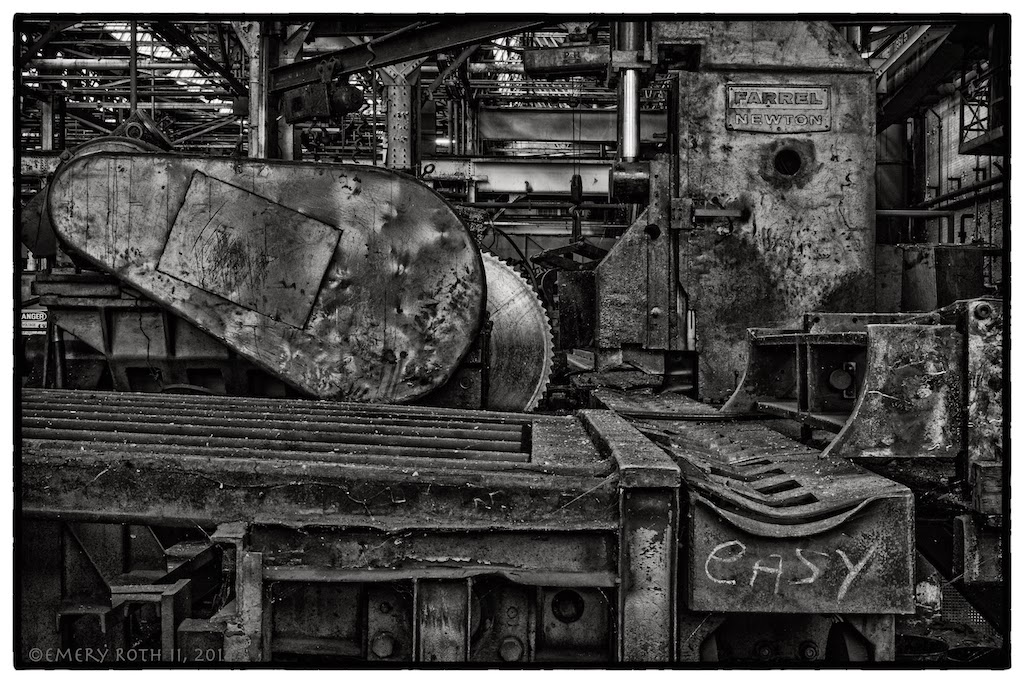PHOTOGRAPHER’S JOURNAL: I thought of calling this “Bodybuilding” or “Face-off,” but it quickly became clear that the fun was in finding ones own title. I invite readers’ suggestions for a title for this photograph. What would you title this image?
A reader recently wrote to ask, if the way things looked does not determine processing, how do I choose? The more I do this, the more I try to respond to qualities I find in the image. Sometimes I know them as I’m shooting. More often, I only have an idea of possible directions.
I make choices on processing as I make choices on composition. Everything is subjective. To a large extent, I left the mannequins as they were when Rick Pauline passed them to me. With more time I would have made other arrangements and other images. Perhaps I’ll go back and do that. They are a great subject. Or maybe this says as much as need be said.
I adjusted the placement of the mannequin on the left and at the front and got down low enough to make the pattern of overlapping necks and shoulders interesting. The height of the camera controlled both the relationship of the rows of mannequins and the height of the entire shot. Thus, best placement was determined to make for interesting overlap and best proportions.
This image was captured with care to preserve very sharp detail back to front because I liked the course fabric of the mannequins under the strong side light that made it stand out. My intuition as I began processing was to enhance and emphasize that as much as possible. As I began I had only a vague idea in what direction I wanted to develop the image. Though I shot in color, the result was a sepia-like monochrome. Some unnecessary detail on the floor was happily minimized by leaning into the image contrast and the natural vignette. I set the curve of the gradient to maximize contrast while minimizing the detail that would be lost except in the darkest areas. NIK’s Silver Efex Pro is one of the best plug-ins available and allows many ways to gain very precise control over all aspects of grayscale imagery. The treatment seemed to call for the full weight of B&W without sepia softening, though Silver Efex let me experiment with “silver toning” and paper tone..
By moving the vignette’s center to the left side of the screen, my hope was that the eye would be led along the picture’s diagonal and to the “dialogue” of eyeless audience and voiceless speaker.
Military Intelligence
You can tell by the seam of the spine
and the place where a nod should be and a brim for salutes
that these were men who’d heed a call to arms
and never lose their heads in battle.















